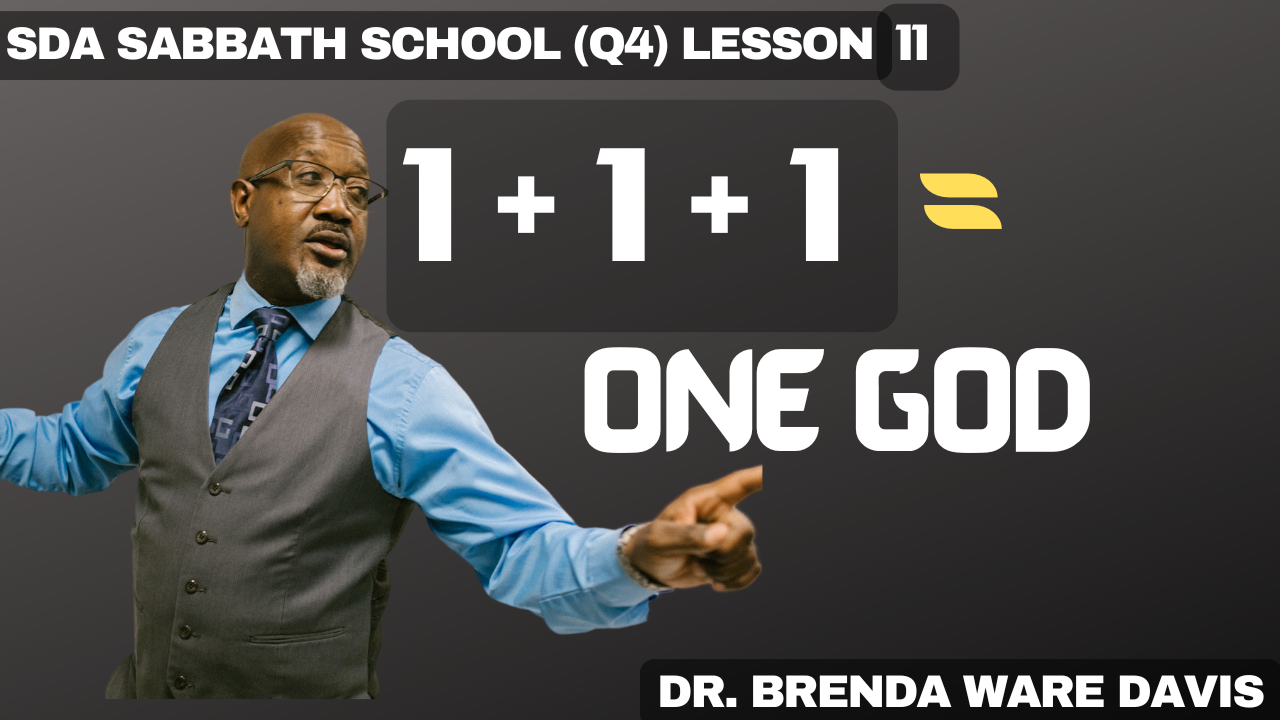Future Hope (Lesson 5) Resurrection: The Dead Raised Before the Cross Day 5: Jairus’s Daughter
Jesus does not limit his care to any specific ethnic group, race, social class, or gender. This we see in the case of Jairus’s daughter who died, and Jesus brought her back to life again.
Sin, Evil, Death, Dying, and What Happens After We Die
This series addresses the concerns we all have: the concern for sin, evil, death, dying, and what happens after we die. Is there hope after death? When God created us humans, he intended for us to live forever in a loving, peaceful relationship with him. But this relationship has been broken by sin.
Here, we address the origin of sin and look more closely at death and dying.
But, instead of looking at death negatively, we look at it in the context of hope, the promised hope based on what Jesus did for us when he died and came back to life again.
From the Sabbath School Adult Bible Study Guide 2022 Quarter 4: Sabbath.School (See also Hope Sabbath School and 3ABN Sabbath School)
Visit SabbathSchoolDaily.com for more videos like this one.
Inviting the Holy Spirit
Father, we are grateful that you do not give out your love and compassion based on social status, race, ethnicity, or gender. Pour out your loving grace upon us. In Jesus’ Name Amen
Prior to Jesus’ own death and resurrection, we read of several cases in which a person died and was raised back to life again. These resurrections were not limited to any ethnic group, social class, race, or gender. In this group was Moses who was perhaps the greatest human leader of God’s people ever, according to Deut. 34:10–12. You can review the incident of Moses from Day 2 of this lesson at: SabbathSchoolDaily.com
In contrast, the poor Phoenician widow, whose son God raised from the dead, was not even an Israelite (1 Kings 17:9).
Then there was the Shunammite woman’s son. He died and God raised him back to life again. This Shunammite woman was prominent in her community (2 Kings 4:8).
The resurrection account of the Phoenician widow’s son and the Shunammite woman’s son was covered on Day 3. Finally, we read of the widow of Nain’s son, whom Jesus raised from the dead. We talked about this incident on Day 4. The widow of Nain had only one son, upon whom she was most likely dependent (Luke 7:12). You can review these accounts at:
SabbathSchoolDaily.com
In contrast, to the widow of Nain, Jairus was a ruler of the synagogue, probably in Capernaum located on the north shore of the sea of Galilee (Mark 5:22). Regardless of their different cultural backgrounds or social status, all of them were blessed by God’s life-giving power.
In Mark 5:21– 24, 35–43 Jairus’s daughter dies. Jesus’s response in Mark 5:29 is
‘The child is not dead, but sleeping”? (Mark 5:39, NKJV).
What did Jesus mean when he made this statement?
Mark 5:21-24
21 Now when Jesus had crossed over again by boat to the other side, a great multitude gathered to Him; and He was by the sea.
22 And behold, one of the rulers of the synagogue came, Jairus by name. And when he saw Him, he fell at His feet
23 and begged Him earnestly, saying, “My little daughter lies at the point of death. Come and lay Your hands on her, that she may be healed, and she will live.”
24 So Jesus went with him, and a great multitude followed Him and thronged Him. (Mark 5:21-24)
Mark 5:35-43
35 While He was still speaking, some came from the ruler of the synagogue’s house who said, “Your daughter is dead. Why trouble the Teacher any further?”
36 As soon as Jesus heard the word that was spoken, He said to the ruler of the synagogue, “Do not be afraid; only believe.”
37 And He permitted no one to follow Him except Peter, James, and John the brother of James.
38 Then He came to the house of the ruler of the synagogue, and saw a tumult and those who wept and wailed loudly.
39 When He came in, He said to them, “Why make this commotion and weep? The child is not dead, but sleeping.”
40 And they ridiculed Him. But when He had put them all outside, He took the father and the mother of the child, and those who were with Him, and entered where the child was lying.
41 Then He took the child by the hand, and said to her, “Talitha, cumi,” which is translated, “Little girl, I say to you, arise.”
42 Immediately the girl arose and walked, for she was twelve years of age. And they were overcome with great amazement.
43 But He commanded them strictly that no one should know it, and said that something should be given her to eat. (Mark 5:35-43)
Jairus’s 12-year-old daughter was very sick at home. So, Jairus went to Jesus and begged him to come to his home and lay His hands on her. But before Jairus and Jesus got to the house, some men brought Jairus the sad news.
“ ‘Your daughter is dead. Why trouble the Teacher any further?’ ” (Mark 5:35, NKJV). Then Jesus said to Jairus, “ “ ‘Do not fear, only believe’ ” (Mark 5:36, NRSV).
All Jairus could do is trust that Jesus could save his little girl even though she was already dead.
Jairus and Jesus arrived at Jairus’s home. Many people were gathered at the house. Then “Jesus entered the house and said
to the people, “ ‘Why do you make a commotion and weep? The child is not dead but sleeping’ ” (Mark 5:39, NRSV).
The people in the house made fun of Jesus. Why? For
(1) They knew that the little girl was dead. And
(2) they didn’t understand the meaning of Jesus’ words.
Here is what the SDA Commentary says: “The comforting metaphor by which ‘sleep’ stands for ‘death’ seems to have been Christ’s favorite way of referring to this experience ([Matt. 9:24; Luke 8:52;] see on John 11:11–15).
Death is a sleep, but it is a deep sleep from which only the great Life-giver can awaken one, for He alone has the keys to the tomb (see Rev. 1:18; cf. John 3:16; Rom. 6:23).”—The SDA Bible Commentary, vol. 5, p. 609.
So, while they were still on the way, a messenger pressed through the crowd, telling Jairus the bad news that his daughter was dead, and it was useless to trouble the Master further. The word caught the ear of Jesus. “Fear not,” He said; “believe only, and she shall be made whole.”
Jairus pressed closer to the Saviour, and together they hurried to the ruler’s home. Already the hired mourners and flute players were there, filling the air with their outcries. The presence of the crowd, and the uproar shuddered upon the spirit of Jesus. He tried to silence them, saying, “Why make ye this ado, and weep? the damsel is not dead, but sleep.” They were indignant at the words of the Stranger. They had seen the child in the embrace of death, and they laughed Him to scorn. . . .
Jesus approached the bedside, and, taking the child’s hand in His own, He pronounced softly, in the familiar language of her home, the words, “Damsel, I say unto thee, arise.”
Instantly a tremor passed through the unconscious form. The pulses of life beat again. The lips that were unclosed opened with a smile. The eyes opened widely as if from sleep, and the little girl gazed with wonder at the group beside her. She arose, and her parents clasped her in their arms and wept for joy.—The Desire of Ages, pp. 342, 343.
After Jesus woke up Jairus’s daughter from the dead, the little girl’s parents and Jesus’ followers were “overcome with amazement” (Mark 5:42, NRSV).
No wonder! Death, as it stands, is the end of life and it is seemingly irreversible. It is final. So, when Jesus’ followers and the little girl’s parents see her wake up from the dead, with their own eyes, they witness a miracle. For them, this had to have been a life-changing event.
Jesus’ words to Jairus: “ ‘Do not fear, only believe’ ” in Mark 5:36, NRSV are still meaningful today. How can we learn to believe even in the most fearful circumstances?
All things are possible to him that believe; and whatever things we desire when we pray, if we believe that we receive them we shall have them. This type of faith will penetrate the darkest cloud and bring rays of light and hope to the drooping, desponding soul. It is the absence of this faith and trust which brings perplexity, distressing fears, and assumptions of evil. God will do great things for His people when they put their entire trust in Him. “Godliness with contentment is great gain.” Pure and undefiled religion will be exemplified in the life. Christ will prove a never-failing source of strength, a present help in every time of trouble.—Testimonies for the Church, vol. 2, p. 139.
Thus, when we put our trust in God, he will do great things for us. Only Believe!
While living in this world, before being put to death and raised from the dead, Jesus brought several people back to life again. What does this say about his power to resurrect those sleeping in the graves when he returns? Find out from Day 6: Lazarus
Watch Our Past and Present Lessons @ SabbathSchoolDaily.com.














Post Comment